
New Photos
January 22, 2006
 |
|
| John McLean is putting the access port lid back on...this gives you an idea how big the tanks are, lying on their sides on his flatbed. | |
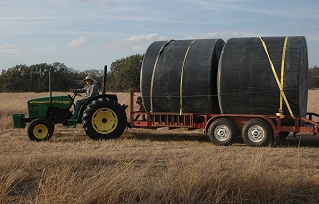 |
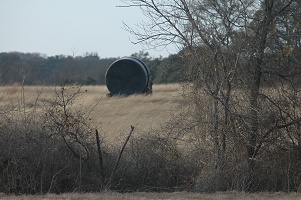 |
| And away goes John on our tractor, pulling the tanks to the SW meadow. At this point, we didn't know that something was going to go wrong at the creek crossing.... | If they look fat, they are: eight feet in diameter. Each holds 2500 gallons. |
 |
|
| Collision with a tree branch caused this big dent. Attempts to push it out by hand from inside (with the tank lying on its side) were unsuccessful. It's going to take a jack and some lumber to do the job, and so far we haven't got it done. | |
 |
|
| Richard and I muscled the unbent tank into the framework of the new rain barn. Being under cover will protect the tank from the sun (UV light degrades the plastic) and keep the water cooler in summer. This one's not quite in position yet; both will fit at that end of the rain barn, each one collecting water from the gutter on its side. In front of the rain barn are the trusses Richard built. | |
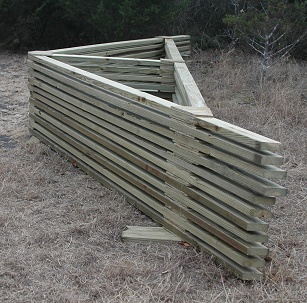 |
|
| Richard built these in the carport; he hauled some of them by garden cart, and John McLean helped him haul the rest on his flatbed. | |
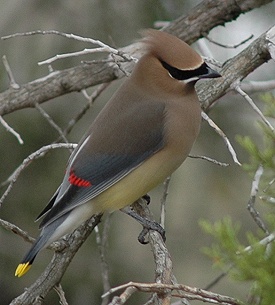 |
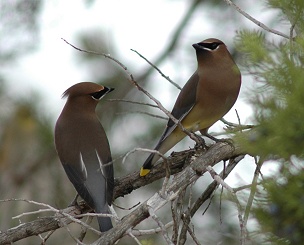 |
| Cedar waxwings winter here, traveling in large flocks; their "Seeeee....seeeeet" calls can be quite loud. | A treeful of cedar waxwings seems to be in constant motion, with the different colors of their feathers--the blue gray of wings, warm brown back and breast, yellow belly, dark tail tipped with bright yellow, red flash of the "wax" tipped feathers on the wings, and the crisp black mask edged in white making the tree look as if five different kinds of birds were busy there. |
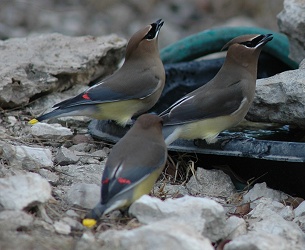 |
|
| Waxwings like to feed together and come to water together. Sometimes they come by themselves, but they'll also "invade" groups of birds already watering. | |
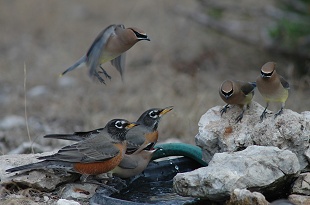 |
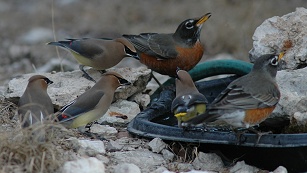 |
| Here, waxwings have decided to join a group of robins, who had also come in a group. Some birds--robins and waxwings among them--prefer the upper basin of the waterer, and will crowd in there when they could have plenty of space at one of the other basins. | Sometimes the waterer gets very crowded. In addition to the cedar waxwings and robins, cardinals, mockingbirds, several species of sparrows, chickadees, titmice, and goldfinches were coming to drink. I estimate that at least a hundred birds were in the immediate area most of the time I was watching. |
![]()

